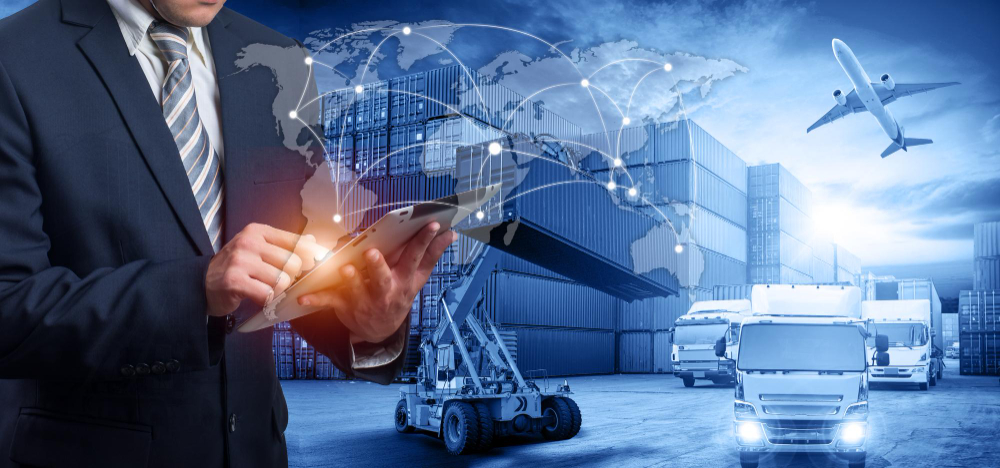Introduction: Distribution in the Innovation Capital of the World
In the San Francisco Bay Area—where startups are born, scale-ups thrive, and global giants like Apple, Tesla, and Salesforce redefine industry standards—distribution isn’t a backend function. It’s a strategic weapon.
For COOs based in this fast-moving ecosystem, distribution means more than moving goods. It’s about balancing speed with cost, sustainability with scale, and disruption with resilience.
With Silicon Valley setting global standards in customer experience, even a single misstep in order fulfillment, last-mile delivery, or inventory routing can damage a brand’s reputation—and erode competitive advantage.
This is why a new generation of Bay Area COOs is turning to AI, automation, and Virtual Delivery Centers (VDCs) to rebuild distribution networks for a new era.
The Distribution Dilemma: Old Infrastructure, New Expectations
While consumer expectations soar and B2B supply chains grow more complex, most companies still operate distribution models designed for a pre-eCommerce world:
-
Static warehouse layouts.
-
Fragmented channel management.
-
Legacy systems with no real-time data.
-
Manual order processing.
-
Delayed reverse logistics.
For Bay Area businesses—where customers expect same-day delivery, carbon-neutral shipping, and omnichannel fluidity—these inefficiencies are unacceptable.
What Makes the Bay Area Unique?
COOs here are under a different kind of pressure:
-
Speed Expectations Are Higher: Customers in San Francisco, Palo Alto, and San Jose expect Amazon Prime speed as the baseline—not the exception.
-
Green Mandates Matter: Sustainability is not a buzzword. It's a compliance and brand imperative. Companies are judged on carbon footprint, packaging waste, and ethical sourcing.
-
High Real Estate Costs: Warehousing and logistics hubs near the Bay come at a premium. Space is constrained. Efficiency isn’t optional—it’s survival.
-
Tech-Savvy Ecosystem: Your competitors are building with APIs, AI, and robotics. Standing still means falling behind.
The 3 Pillars of Future-Ready Distribution for Bay Area COOs
1. Real-Time Distribution Network Planning
Bay Area companies operate across international time zones, rapid product cycles, and volatile demand. COOs are adopting AI-powered planning tools that dynamically reconfigure networks based on:
-
Real-time demand fluctuations.
-
Weather and traffic conditions.
-
Port congestion and geopolitical risks.
✅ Bay Case: A Palo Alto-based health tech firm used AI to simulate over 1,000 distribution scenarios. By shifting one regional fulfillment center and adopting zone-skipping strategies, they reduced delivery times by 22% and costs by 18%.
2. Omnichannel Fulfillment as a Core Capability
In the Bay Area, the line between DTC, B2B, retail, and eCommerce is disappearing. That means your distribution must adapt to:
-
Customers ordering on mobile, in-store, via subscriptions, or via marketplace platforms.
-
Inventory visibility across all channels.
-
Intelligent order routing to the most optimal node—not just the closest.
✅ Example: A San Francisco-based apparel brand integrates Shopify, Amazon, and their own webstore into a single OMS. Orders are routed based on inventory levels, shipping zone, and delivery promise—not just geography. Return hubs are also algorithmically selected to minimize reverse logistics cost.
3. Sustainable and Circular Distribution Models
Bay Area COOs must now answer:
-
Can we minimize packaging waste?
-
Can we cluster deliveries to reduce emissions?
-
Can we design a circular logistics model for reverse logistics?
✅ Tesla’s Play: While known for cars, Tesla’s parts distribution model is a masterclass in sustainability. Using predictive diagnostics and intelligent stocking, the company minimizes unnecessary shipments. Returned parts are refurbished locally and fed back into the supply chain.
Technology Horizontals Powering Bay Area Distribution Transformation
To enable these transformations, COOs must address key tech horizontals:
Data Unification and API-First Architecture
Disjointed WMS, TMS, OMS, and CRM systems cripple execution. Bay Area firms are prioritizing unified, cloud-based architecture with real-time data pipelines.
AI-Powered Decision Engines
From order routing to inventory forecasting and reverse logistics, ML models are embedded into every micro-decision—driven by real-time data.
Automation in Processing and Sorting
Bay Area warehouses now feature:
-
Vision-guided picking robots.
-
Smart conveyors integrated with AI sorters.
-
Autonomous delivery pilots (like Nuro and Starship Technologies).
Cyber-Resilient Distribution
With growing attacks on the logistics layer, COOs are implementing zero-trust security, blockchain for chain-of-custody, and encrypted APIs for partner integrations.
Virtual Delivery Center: The Secret Weapon for Bay Area COOs
You can’t hire your way out of this transformation.
Top robotics engineers are at Google X. AI supply chain talent is snapped up by Amazon. IoT integrators are consulting for Apple or Stripe.
This is why Bay Area COOs are leaning into the Virtual Delivery Center (VDC) model. Here’s how it works:
✅ On-Demand, Specialized Talent
AI/ML engineers, robotics architects, TMS/WMS integrators, and sustainability consultants—curated and deployed globally via the cloud.
✅ Composable Execution
You don’t need a monolithic program. The VDC executes in modular sprints—stand up one fulfillment flow in four weeks, test reverse logistics automation in eight.
✅ Global Scale, Local Relevance
Deploy bots in East Bay while optimizing your TMS in Japan. The VDC model scales from local pilot to global blueprint.
✅ Sustainability Built-In
Through lifecycle tracking, carbon modeling, and packaging optimization, VDCs help embed sustainability into distribution decisions.
Conclusion: Lead the Next Wave of Distribution Innovation
In a region defined by speed, disruption, and reinvention, Bay Area COOs are no longer asking “Should we modernize our distribution?”—they’re asking “How fast can we scale it globally without compromising speed, cost, or sustainability?”
The answer lies in building smarter, more agile distribution networks, powered by automation, real-time data, and AI, and delivered through a Virtual Delivery Center that matches the region’s appetite for speed and innovation.

